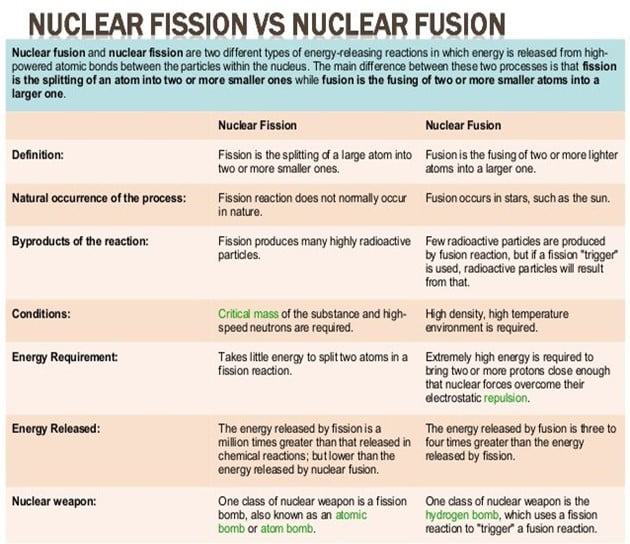Science and Technology
In News: Scientists in the United States have, for the first time, achieved a net gain in energy from a nuclear fusion reaction, seen as a big step forward in the decades-old endeavour to master a technology that is considered the most dependable source of energy in future.
- Fusion is a different, but more powerful, way of harnessing the immense energy trapped in the nucleus of an atom.
- This is the process that makes the Sun and all other stars shine and radiate energy.
- Attempts to master the fusion process have been going on at least since the 1950s, but it is incredibly difficult and is still at an experimental stage.
- The nuclear energy currently in use across the world comes from the fission process, in which the nucleus of a heavier element is split into those of lighter elements in a controlled manner.
- In fusion, nuclei of two lighter elements are made to fuse together to form the nucleus of a heavier atom.
- A large amount of energy is released in both these processes, but substantially more in fusion than fission.
- For example, the fusion of two nuclei of a heavier isotope of hydrogen, called tritium, produces at least four times as much energy as the fission of a uranium atom which is the normal process of generating electricity in a nuclear reactor.
- Besides greater energy yield, fusion is also a carbon-free source of energy, and has negligible radiation risks.
- But fusion reactions happen only at very high temperatures, 10 times the temperature that exists at the core of the Sun, and creating such an extreme environment in a laboratory requires huge amounts of energy.
- So far, the energy released in such experimental fusion reactions have been lower than what is consumed to create the enabling high temperatures.
- At best, some of these reactions have produced ‘near break-even’ energies. That is why the latest experiment conducted at the Lawrence Livermore National Laboratory in California is being considered a big deal.

Source: Indianexpress.com














